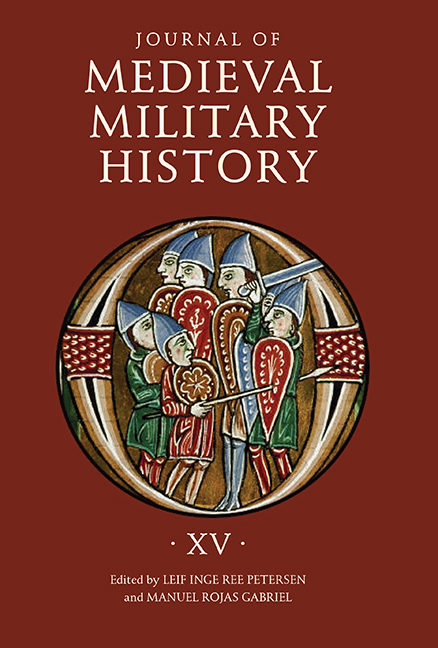Book contents
- Frontmatter
- Dedication
- Contents
- List of Illustrations
- Preface
- 1 Later Roman Grand Strategy: The Fortification of the urbes of Gaul
- 2 In Search of Equilibrium: Byzantium and the Northern Barbarians, 400–800
- 3 Evolving English Strategies during the Viking Wars
- 4 Norman Conquests: A Strategy for World Domination?
- 5 The Papacy and the Political Consolidation of the Catalan Counties, c. 1060–1100: A Case Study in Political Strategy
- 6 Alfonso VII of León-Castile in Face of the Reformulation of Power in al-Andalus, 1145–1157: An Essay in Strategic Logic
- 7 The Treaties between the Kings of León and the Almohads within the Leonese Expansion Strategy, 1157–1230
- 8 A Strategy of Total War? Henry of Livonia and the Conquest of Estonia, 1208–1227
- 9 The English Longbow, War, and Administration
- List of Contributors
- Journal of Medieval Military History
- De Re Militari and the Journal of Medieval Military History
1 - Later Roman Grand Strategy: The Fortification of the urbes of Gaul
Published online by Cambridge University Press: 21 August 2019
- Frontmatter
- Dedication
- Contents
- List of Illustrations
- Preface
- 1 Later Roman Grand Strategy: The Fortification of the urbes of Gaul
- 2 In Search of Equilibrium: Byzantium and the Northern Barbarians, 400–800
- 3 Evolving English Strategies during the Viking Wars
- 4 Norman Conquests: A Strategy for World Domination?
- 5 The Papacy and the Political Consolidation of the Catalan Counties, c. 1060–1100: A Case Study in Political Strategy
- 6 Alfonso VII of León-Castile in Face of the Reformulation of Power in al-Andalus, 1145–1157: An Essay in Strategic Logic
- 7 The Treaties between the Kings of León and the Almohads within the Leonese Expansion Strategy, 1157–1230
- 8 A Strategy of Total War? Henry of Livonia and the Conquest of Estonia, 1208–1227
- 9 The English Longbow, War, and Administration
- List of Contributors
- Journal of Medieval Military History
- De Re Militari and the Journal of Medieval Military History
Summary
There is widespread agreement that during the last quarter of the third century the Roman imperial government initiated what ultimately would be a vast program of military construction throughout large parts of the Empire in the West and most particularly in Gaul. These efforts resulted in a great many previously unwalled or poorly defended urbes being converted at great expense and with considerable social disruption into fortress cities with extensive defenses and supporting construction, with many walls reaching in excess of ten meters in height. Regarding Gaul, the focus of this study, there appears to be a rough consensus that “It was probably Probus (276–80) who instituted the policy of fortifying the western Continental urban centers.” These military construction efforts were carried on throughout the fourth, and in some places can be identified even into the early fifth, century. The building process continued until some 85 per cent, at least, of the 125 previously largely unfortified, or as contemporaries evaluated the situation, inadequately defended, cities located within the borders of the “hexagon” of Gaul had been converted into urban fortresses. The purpose of this paper is to investigate what would appear to have been the military thinking that undergirded the effort focused on the fortification of urban sites in Gaul, and to ascertain whether this lengthy and very expensive process of construction merits consideration as a “grand strategy.”
Why Fortify the Cities of Gaul?
For a considerable time, scholars have argued that the third century and especially its second half was rent by a massive “crisis” that threatened the very existence of the Empire, and that this was true especially for Gaul. Today, the idea of a third-century crisis is no longer as prevalent or as strongly advocated as once was the case. Nevertheless, the supposed destructiveness of trans-Rhenish barbarian invasions remains a vital part of a model of third-century collapse. Luttwak, for example, in the most recent edition of his The Grand Strategy of the Roman Empire, maintains his previous views and claims that “the catastrophic invasions of the mid-third century” by trans-Rhenish barbarians are to be regarded as a crucial aspect of imperial decline if not, in fact, its fundamental cause.
- Type
- Chapter
- Information
- Journal of Medieval Military HistoryStrategies, pp. 2 - 35Publisher: Boydell & BrewerPrint publication year: 2017



